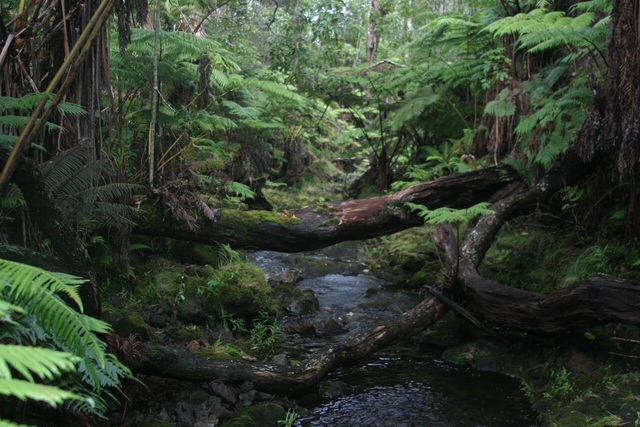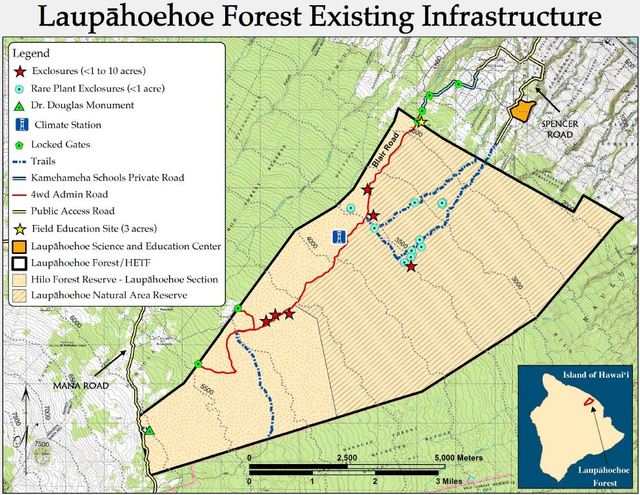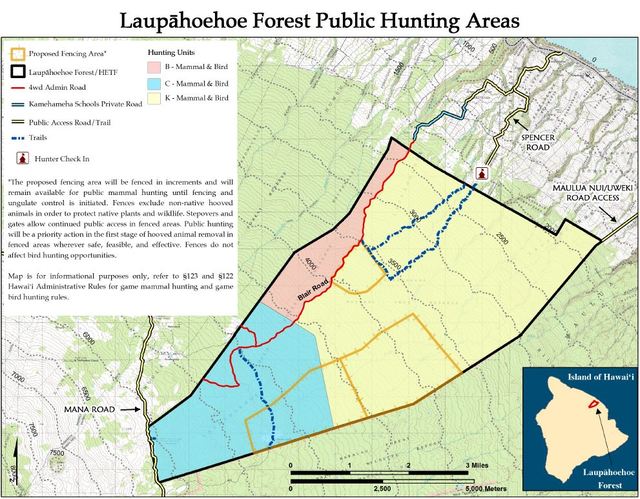HILO — In an effort to protect native plants from wild pigs, the state Department of Land and Natural Resources is proposing to fence an additional 2,659 acres in the Laupahoehoe forest. ADVERTISING HILO — In an effort to protect
HILO — In an effort to protect native plants from wild pigs, the state Department of Land and Natural Resources is proposing to fence an additional 2,659 acres in the Laupahoehoe forest.
The fencing would occur as part of a proposed management plan for the 13,343-acre area that includes the Laupahoehoe Natural Area Reserve and a portion of the Hilo Forest Reserve. Currently, fencing is limited to 35 acres in the forest.
Steve Bergfeld, Division of Forestry and Wildlife branch manager, said fencing is an effective way to protect native plant species from pigs and other ungulates, and will account for about half of the plan’s estimated $10 million budget. The document would guide management efforts for the next 15 years.
Fencing also will reduce the amount of forest available for hunting, a factor DLNR officials and a Laupahoehoe advisory council kept in mind when selecting those areas, he said.
“We are trying to balance all of our mandates and allow hunting and do forest protection,” Bergfeld said. “We chose areas we thought were the harder places to get to, the furthest places to get to. Plus, it also has good forest.”
Funding, which still needs to be secured, would likely come from both state and federal sources, he said.
Rapid ohia death, perhaps the greatest threat to the forest, isn’t addressed in the draft plan, but will likely be added in the final version, Bergfeld said. He said the plan was being written when the impact from the disease was first becoming clear.
So far, there are no confirmed cases in that area.
Additionally, the draft plan calls for maintenance of existing trails, the addition of a camping shelter at a former “cowboy camp,” and helicopter landing zones to assist with forest management efforts.
The forest is considered valuable habitat for native species and ranges from 1,700 feet to 6,200 feet above sea level. It includes the Hawaii Experimental Tropical Forest, established in 2007 to foster research of Hawaii’s native forests.
For more information, visit https://dlnr.hawaii.gov/ecosystems/laupahoehoe_dea.
Comments on the proposed plan will be accepted until April 8.
Email Tom Callis at tcallis@hawaiitribune-herald.com.





